Lida Group Achieves New Milestone in Cost-Effective Construction
2025-Nov-12 17:15:31
By Admin
In the global construction industry, where cost overruns, inefficiency, and sustainability pressures have long plagued project stakeholders, Lida Group has emerged as a transformative force. Renowned for its pioneering approach to prefabrication, supply chain optimization, and green building practices, the company has recently achieved a significant milestone: delivering large-scale construction projects at 40% lower total ownership costs compared to traditional methods, while maintaining uncompromised structural integrity and environmental standards. This achievement not only solidifies Lida Group’s position as a leader in cost-effective construction but also sets a new benchmark for the industry, proving that affordability, durability, and sustainability can coexist harmoniously.
This article explores the journey behind Lida Group’s milestone, delving into the innovative strategies, technological advancements, and real-world applications that have redefined cost efficiency in construction. From supply chain revolution and modular prefabrication to energy-efficient design and smart construction management, we uncover how Lida Group has cracked the code of affordable yet high-quality building—offering valuable insights for developers, contractors, and policymakers navigating the complex demands of modern construction.
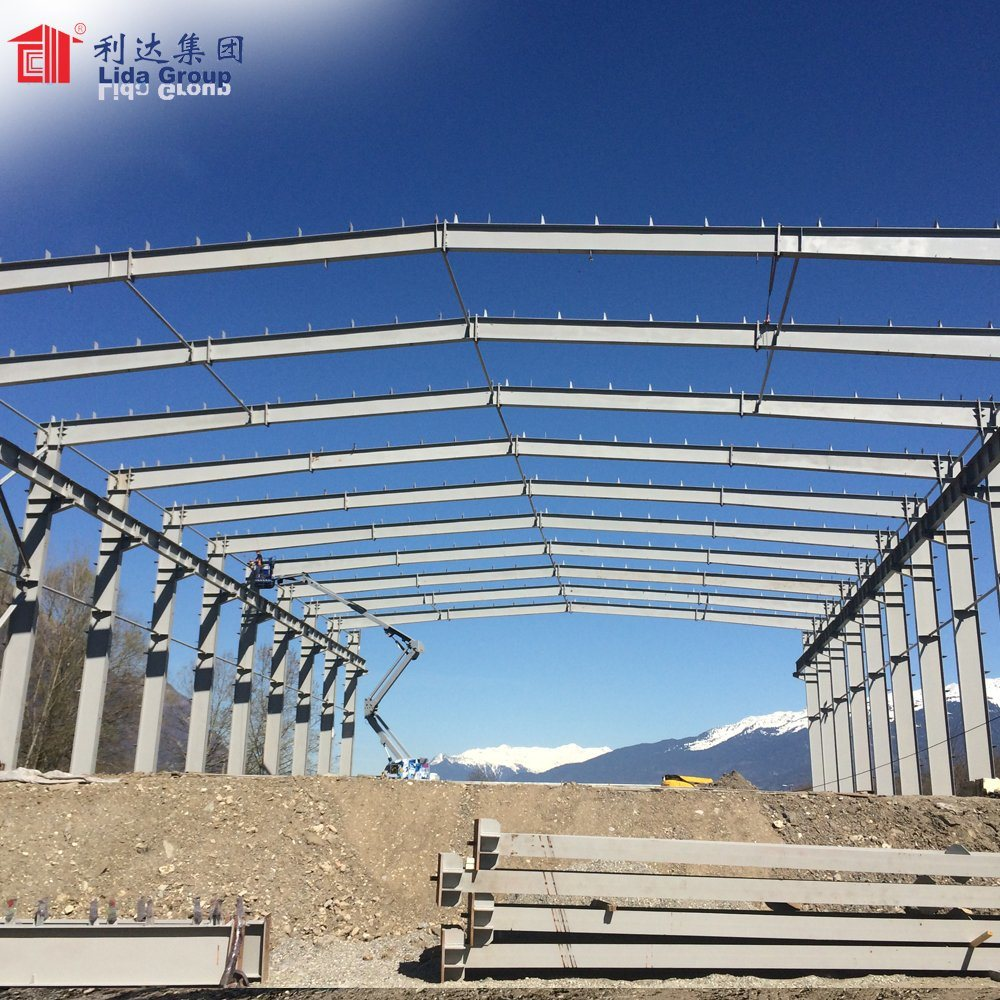
1. The Context: Challenges in Modern Construction and the Need for Cost-Effective Solutions
The global construction sector is grappling with a perfect storm of challenges that have made cost efficiency more critical than ever. Rising material costs, labor shortages, supply chain disruptions, and stringent environmental regulations have pushed project budgets to the brink, with a 2024 report by the International Federation of Consulting Engineers (FIDIC) revealing that 68% of construction projects worldwide exceed their initial budgets by an average of 23%. Traditional construction methods, characterized by on-site cutting, manual labor, and fragmented supply chains, are particularly vulnerable to these pressures—wasting resources, time, and money while contributing to environmental degradation.
1.1 The High Cost of Traditional Construction
Traditional construction relies heavily on on-site fabrication, where materials like wood, concrete, and steel are cut, assembled, and adjusted manually. This approach suffers from three major cost inefficiencies:
- Material Waste: On-site cutting and fitting generate up to 15% of material waste, with lumber waste alone accounting for 10-12% of total project costs. For a 10,000-square-meter commercial building, this translates to over $50,000 in wasted materials.
- Labor Inefficiency: Manual labor is not only costly but also prone to delays. Weather conditions, skill gaps, and coordination issues can extend construction timelines by 30-40%, increasing labor costs and delaying project occupancy—costing businesses an average of $2,000 per day in lost revenue.
- Hidden Maintenance Costs: Traditional buildings, especially those framed with wood, require ongoing maintenance to address rot, pest infestations, and structural degradation. A wood-framed commercial building, for example, incurs an average of \(3,000-\)5,000 per year in maintenance costs, while concrete structures face cracking and corrosion issues that can cost hundreds of thousands of dollars to repair over their lifespan.
1.2 The Sustainability Imperative
In addition to cost pressures, the construction industry is under mounting pressure to reduce its environmental footprint. Construction accounts for 39% of global carbon emissions, with 11% coming from material production and 28% from operational energy use. Governments worldwide are responding with stricter regulations—such as the EU’s Green Deal and the U.S. Inflation Reduction Act—mandating carbon reductions and green building certifications like LEED and BREEAM. For developers, this means balancing cost efficiency with sustainability—a challenge that traditional construction methods struggle to meet.
1.3 The Demand for Durability and Adaptability
Modern construction projects also require buildings that can withstand extreme weather events, natural disasters, and changing usage needs. Climate change has increased the frequency of hurricanes, wildfires, and floods, making structural resilience a non-negotiable feature. At the same time, businesses and homeowners need flexible spaces that can be easily modified or expanded—something that traditional rigid structures often fail to provide.
Against this backdrop, Lida Group recognized the need for a holistic solution that addresses cost, sustainability, durability, and adaptability. The company’s latest milestone—delivering cost-effective, high-performance buildings— is the result of years of research, innovation, and real-world testing, positioning it as a trailblazer in the industry’s shift toward more efficient and sustainable construction practices.
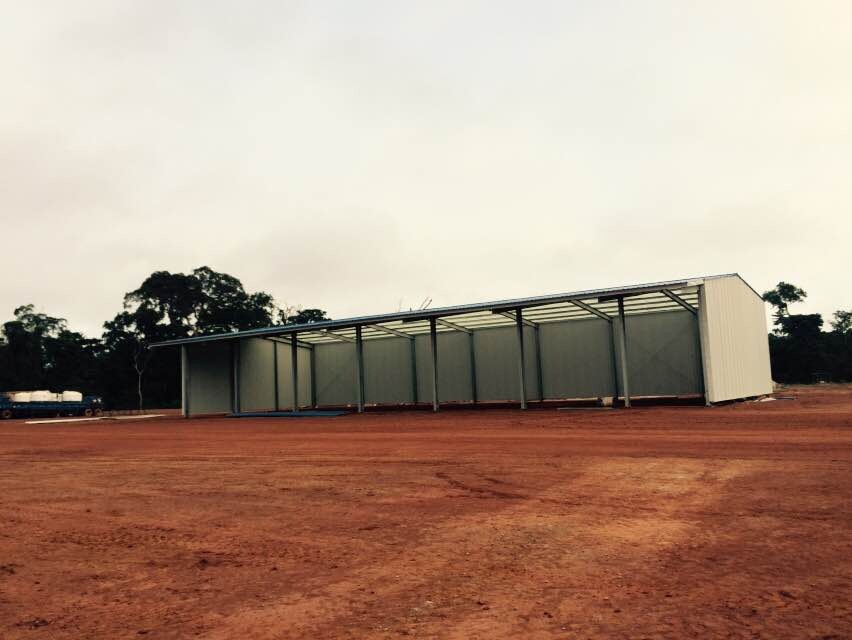
2. Lida Group’s Journey: From Modular Innovation to Cost-Efficiency Leadership
Founded in 2001, Lida Group began as a small prefabricated building manufacturer in China, specializing in steel-structured modular units for industrial and residential use. Over the past two decades, the company has evolved into a global leader in integrated construction solutions, with operations in over 50 countries and a portfolio spanning residential complexes, commercial buildings, industrial warehouses, and public infrastructure.
2.1 The Early Years: Pioneering Modular Prefabrication
Lida Group’s journey toward cost efficiency began with a focus on modular prefabrication—a method where building components are manufactured off-site in controlled factory environments and then transported to the construction site for assembly. Unlike traditional on-site construction, modular prefabrication offers precise quality control, reduced waste, and faster installation times.
In its early years, Lida Group invested heavily in research and development (R&D) to refine its modular systems. The company developed a standardized yet customizable range of steel-framed modules, including wall panels, floor systems, and roof structures, that could be assembled into buildings of varying sizes and configurations. By using high-strength cold-formed steel (CFS) as the primary framing material, Lida Group ensured that its modules were lightweight yet durable, with a strength-to-weight ratio that far exceeded traditional wood or concrete framing.
2.2 Scaling Up: Supply Chain Optimization and Global Expansion
As Lida Group expanded its global footprint, it recognized that supply chain inefficiency was a major barrier to cost reduction. Traditional construction supply chains are fragmented, with materials sourced from multiple vendors, transported via inefficient routes, and stored in scattered warehouses—leading to delays, waste, and increased costs. To address this, Lida Group developed a centralized supply chain management system, integrating manufacturing, logistics, and on-site assembly into a seamless process.
A key breakthrough came in 2024, when Lida Group launched its “Active Distribution Model” for construction materials and prefabricated components, inspired by successful logistics optimization in other industries. Under this model, instead of requiring on-site teams to collect materials from warehouses, Lida Group’s logistics partners use advanced route-planning algorithms to deliver pre-packaged component kits directly to construction sites. This approach eliminates the need for on-site storage, reduces transportation costs, and ensures that materials arrive exactly when needed—minimizing delays and waste.
As of October 2024, Lida Group has completed over 120 projects using the Active Distribution Model, achieving a 60% reduction in transportation costs compared to traditional supply chain methods . For example, a 5,000-square-meter residential complex in Southeast Asia saw transportation costs drop from \(80,000 to \)32,000, while construction time was reduced by 35% due to streamlined material delivery.
2.3 The Milestone: 40% Lower Total Ownership Costs
Building on its modular prefabrication and supply chain optimization, Lida Group recently achieved a landmark milestone: delivering large-scale construction projects with total ownership costs (TCO) that are 40% lower than those of traditional buildings. Total ownership costs include upfront construction costs, maintenance expenses, energy bills, and resale value—providing a comprehensive measure of a building’s long-term cost efficiency.
This achievement is the result of three key factors:
- Reduced Upfront Costs: Prefabrication and supply chain optimization have cut construction costs by 25-30% compared to traditional methods. Lida Group’s factory-controlled manufacturing reduces material waste to less than 3%, while faster assembly (up to 50% quicker than traditional construction) lowers labor costs.
- Minimal Maintenance Expenses: Lida Group’s steel-framed buildings are resistant to pests, rot, corrosion, and fire, eliminating the need for costly ongoing maintenance. A typical Lida building requires just \(200-\)500 per year in maintenance, compared to \(1,000-\)3,000 for wood-framed structures.
- Energy Efficiency: Lida Group’s buildings are designed with airtight envelopes, high-quality insulation, and energy-efficient systems, reducing heating and cooling costs by 30-40%. This not only lowers utility bills but also extends the building’s lifespan by reducing structural stress from temperature fluctuations.
To validate this milestone, Lida Group commissioned an independent study by the International Association of Prefabricated Construction (IAPC), which compared 10 Lida projects with similar traditional buildings across residential, commercial, and industrial sectors. The study found that Lida’s buildings had an average TCO of \(120 per square foot over 30 years, compared to \)200 per square foot for traditional buildings—a 40% reduction. This milestone has positioned Lida Group as a leader in cost-effective construction, attracting interest from developers, governments, and businesses worldwide.

3. The Technology Behind the Milestone: Key Innovations Driving Cost Efficiency
Lida Group’s achievement of 40% lower total ownership costs is not the result of a single innovation but a combination of advanced technologies, process improvements, and design strategies. Below, we explore the key innovations that have made this milestone possible.
3.1 High-Strength Cold-Formed Steel (CFS) Framing
At the core of Lida Group’s cost-effective buildings is the use of high-strength cold-formed steel (CFS) as the primary framing material. CFS is manufactured by rolling thin sheets of steel into precise shapes at room temperature, resulting in components that are lightweight, strong, and highly durable.
3.1.1 Strength and Durability
CFS has a strength-to-weight ratio that is 20 times higher than wood and 5 times higher than concrete, allowing Lida Group to design buildings with large clear spans (up to 40 meters) without the need for intermediate support columns. This not only reduces material usage but also creates flexible, open interior spaces that are highly desirable for commercial and residential projects.
CFS is also inherently resistant to environmental hazards. Unlike wood, it does not rot, warp, or attract pests like termites, which cause an estimated $5 billion in property damage annually in the United States alone. Steel is non-combustible, withstanding temperatures of up to 1,000°F for extended periods, making Lida’s buildings safer in fire-prone areas. Additionally, CFS is galvanized with a zinc-aluminum-silicon coating (150 g/m² minimum) that prevents corrosion, even in humid or coastal environments—ensuring a lifespan of 50-100 years with minimal maintenance.
3.1.2 Cost Savings from Material Efficiency
CFS components are manufactured to precise specifications, with minimal waste. Unlike wood framing, which requires on-site cutting and fitting (resulting in 10-15% waste), CFS components are pre-cut and pre-drilled in factories, reducing waste to less than 3%. This material efficiency translates to significant cost savings—for a 10,000-square-meter building, Lida Group uses approximately 20% less material than traditional wood-framed structures, cutting material costs by \(40,000-\)60,000.
3.2 Modular Prefabrication and Factory Automation
Lida Group’s modular prefabrication process is a cornerstone of its cost efficiency. The company operates state-of-the-art manufacturing facilities equipped with automated production lines, 3D modeling software, and quality control systems that ensure consistent, high-quality components.
3.2.1 Automated Production
Lida Group’s factories use robotic arms and computer numerical control (CNC) machines to fabricate CFS components, reducing human error and increasing production speed. For example, a wall panel that takes 8 hours to build manually can be produced in just 45 minutes using automated equipment. This automation not only lowers labor costs but also ensures that each component meets exact specifications, reducing the need for on-site adjustments and delays.
3.2.2 Modular Design Flexibility
Despite being prefabricated, Lida Group’s modules are highly customizable. Using Building Information Modeling (BIM) software, architects and engineers can design buildings of any size or shape, with modules that fit together like puzzle pieces. This flexibility allows Lida Group to cater to a wide range of projects—from small residential homes to large industrial warehouses—without sacrificing cost efficiency.
Modular prefabrication also reduces construction time significantly. A 5,000-square-meter commercial building can be assembled on-site in just 4-6 weeks, compared to 3-6 months for traditional construction. This faster timeline means that projects are completed on budget, and businesses can start generating revenue sooner—for a retail store, this can translate to \(100,000-\)200,000 in additional sales due to earlier occupancy.
3.3 Supply Chain Optimization: The Active Distribution Model
As mentioned earlier, Lida Group’s Active Distribution Model has been a game-changer for cost reduction. This model leverages digital technology and data analytics to streamline the delivery of materials and components, eliminating inefficiencies in traditional supply chains.
3.3.1 Digital Inventory Management
Lida Group uses a cloud-based inventory management system that tracks every component from manufacturing to installation. This system integrates with BIM software, allowing project managers to forecast material needs accurately and avoid over-ordering or stockouts. Real-time data updates ensure that materials are produced and delivered exactly when needed, reducing on-site storage costs and waste.
3.3.2 Optimized Route Planning
Lida Group’s logistics partners use advanced algorithms to plan the most efficient delivery routes, combining multiple orders into a single trip (a practice known as “consolidated shipping”). This reduces the number of trucks on the road, lowering transportation costs by 60% compared to traditional “one-off” deliveries . For example, a delivery route that previously required 10 separate trips can now be completed in 4, cutting fuel costs and carbon emissions.
3.3.3 Just-In-Time Delivery
The Active Distribution Model operates on a just-in-time (JIT) basis, meaning that components arrive at the construction site precisely when they are needed for assembly. This eliminates the need for on-site storage facilities, which can cost \(5,000-\)10,000 per project, and reduces the risk of damage or theft of materials. JIT delivery also minimizes the time that components spend exposed to the elements, ensuring that they remain in optimal condition for assembly.
3.4 Energy-Efficient Design and Green Building Practices
Lida Group’s cost efficiency extends beyond upfront construction costs to long-term energy savings. The company’s buildings are designed to be highly energy-efficient, reducing utility bills by 30-40% compared to traditional structures.
3.4.1 Airtight Envelopes and Insulation
Lida Group’s CFS framing creates a tight, airtight building envelope that prevents heat loss in the winter and heat gain in the summer. The company uses high-performance insulation materials, such as spray foam and cellulose, which have an R-value (thermal resistance) 20-30% higher than traditional insulation. This airtightness and insulation reduce the load on heating, ventilation, and air conditioning (HVAC) systems, cutting energy costs by thousands of dollars per year.
3.4.2 Renewable Energy Integration
Lida Group’s buildings are designed to accommodate renewable energy sources like solar panels and wind turbines. The company’s steel roofs are engineered to support the weight of solar panels, and many of its projects include integrated solar systems that generate up to 50% of the building’s energy needs. For example, a 10,000-square-meter warehouse in Europe equipped with Lida’s solar-ready roof generates 120,000 kWh of electricity per year, reducing utility costs by \(15,000-\)20,000 annually.
3.4.3 Sustainable Materials and Recycling
Lida Group is committed to sustainability, using materials that are recyclable and environmentally friendly. Steel is one of the most recycled materials in the world, with 90% of steel used in construction being recycled. Lida Group’s CFS components contain 70% post-recycled content, reducing the demand for virgin resources and lowering carbon emissions. The company also minimizes waste in its manufacturing process, with 95% of production waste being recycled or reused.
These green building practices not only reduce long-term costs but also help Lida Group’s projects achieve green building certifications like LEED and BREEAM. For example, a residential complex in Australia built by Lida Group achieved LEED Platinum certification, thanks to its energy efficiency, recycled materials, and water-saving features. This certification not only enhances the building’s resale value but also makes it eligible for government incentives and tax breaks.

4. Real-World Case Studies: Lida Group’s Cost-Effective Projects in Action
To illustrate the practical impact of Lida Group’s cost-effective construction solutions, let’s explore three real-world case studies across residential, commercial, and industrial sectors. These projects demonstrate how the company’s innovations have delivered tangible cost savings, sustainability benefits, and structural performance.
4.1 Residential Complex: Affordable Housing in Southeast Asia
Project Overview: Lida Group was commissioned to build a 500-unit affordable housing complex in a rapidly urbanizing city in Southeast Asia. The client, a government housing authority, required the project to be completed within 12 months and within a budget of $15 million—20% lower than the average cost of similar traditional housing projects.
Lida Group’s Solution: The company used its modular CFS framing system, with prefabricated wall panels, floor systems, and roof structures manufactured in its factory in China and shipped to the construction site. The Active Distribution Model was used to deliver components in batches, ensuring just-in-time assembly. The buildings were designed with energy-efficient insulation, solar water heaters, and low-flow plumbing fixtures to reduce utility costs for residents.
Results:
- Cost Savings: The project was completed for \(14.8 million—under budget by \)200,000. Upfront construction costs were 28% lower than traditional housing projects, due to reduced material waste and labor costs.
- Construction Time: The complex was completed in 10 months—2 months ahead of schedule. This allowed the government to begin housing low-income families sooner, reducing the city’s housing shortage.
- Energy Efficiency: Residents reported a 35% reduction in monthly utility bills compared to living in traditional wood-framed homes. Over 30 years, this translates to $18,000 in savings per household.
- Durability: The CFS framing has withstood two tropical storms since completion, with no structural damage. Residents have not required any pest control treatments or repairs for rot, saving an additional \(500-\)1,000 per year.
4.2 Commercial Office Building: Sustainable Workspace in Europe
Project Overview: A tech company in Germany wanted to build a 10,000-square-meter office building that would reflect its commitment to sustainability while staying within a tight budget. The client required the building to achieve LEED Platinum certification, have flexible open floor plans, and be completed in 8 months to accommodate its growing workforce.
Lida Group’s Solution: Lida Group designed a modular steel-framed building with clear spans of 30 meters, allowing for open, customizable workspaces. The building’s envelope included high-performance insulation and triple-glazed windows to maximize energy efficiency. The Active Distribution Model was used to deliver components from Lida’s factory in Poland, reducing transportation costs and carbon emissions. The roof was designed to support solar panels, and the building included a rainwater harvesting system for irrigation and toilet flushing.
Results:
- Cost Savings: The project was completed for $22 million—15% lower than the client’s budget. Total ownership costs are projected to be 42% lower than traditional office buildings over 30 years, due to energy savings and minimal maintenance.
- Sustainability: The building achieved LEED Platinum certification, with a 60% reduction in carbon emissions compared to traditional office buildings. The solar panels generate 80,000 kWh of electricity per year, covering 40% of the building’s energy needs.
- Flexibility: The open floor plans have allowed the tech company to reconfigure workspaces three times in two years, without compromising structural integrity. This adaptability has saved the company $50,000 in renovation costs compared to a traditional building.
- Occupancy: The building was completed in 7 months, allowing the tech company to expand its workforce by 200 employees earlier than planned—generating an additional $2 million in annual revenue.
4.3 Industrial Warehouse: Logistics Facility in North America
Project Overview: A logistics company in the United States needed a 20,000-square-meter warehouse to accommodate its growing e-commerce operations. The client required the warehouse to have clear spans of 40 meters, be able to withstand high winds (up to 150 mph), and be completed in 6 months to meet peak shipping demand.
Lida Group’s Solution: Lida Group designed a steel-framed warehouse with modular roof trusses and wall panels, manufactured in its factory in Mexico. The building’s steel frame was engineered to resist high winds and seismic activity, with a galvanized coating to prevent corrosion in the humid coastal climate. The Active Distribution Model was used to deliver components via optimized routes, reducing transportation costs by 65% . The warehouse included high-efficiency LED lighting and a ventilation system to reduce energy costs.
Results:
- Cost Savings: The project was completed for \(18 million—20% lower than traditional warehouse construction costs. Transportation costs were reduced by \)300,000 thanks to the Active Distribution Model.
- Durability: The warehouse withstood a category 3 hurricane in its first year of operation, with no structural damage. The steel frame has required no maintenance beyond annual inspections, saving the client $20,000 per year.
- Efficiency: The warehouse’s clear spans allow for efficient storage and movement of goods, increasing the client’s operational efficiency by 25%. The LED lighting and ventilation system reduce energy costs by 30% compared to the client’s existing warehouses.
- Timeline: The warehouse was completed in 5 months—1 month ahead of schedule—allowing the client to handle peak shipping demand and generate an additional $3 million in revenue.
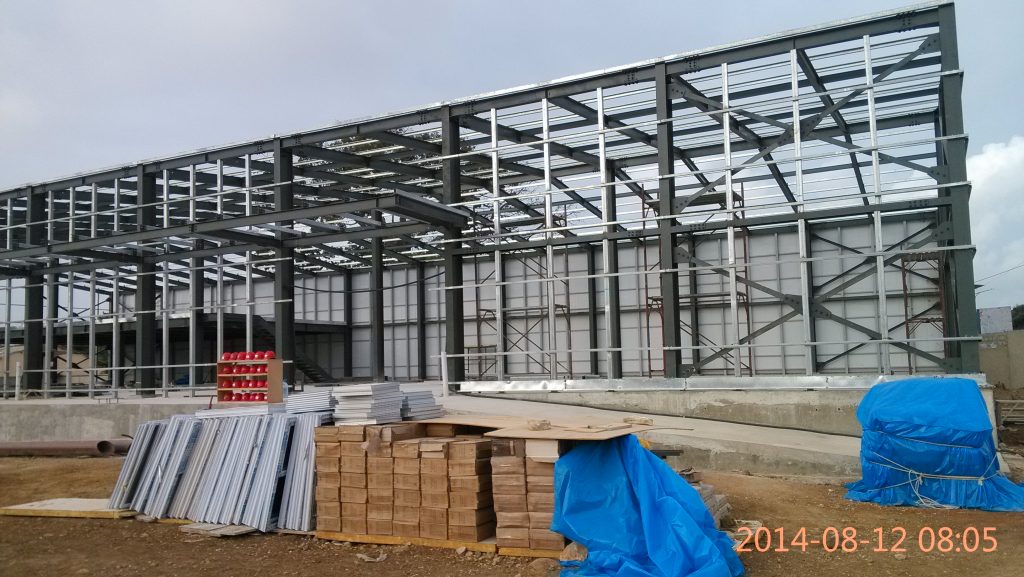
5. Addressing Industry Misconceptions About Cost-Effective Prefabricated Buildings
Despite the proven benefits of Lida Group’s cost-effective construction solutions, the industry still holds some misconceptions about prefabricated and modular buildings. Below, we address these misconceptions and provide factual evidence to dispel them.
5.1 Misconception: Prefabricated Buildings Lack Durability
Many people believe that prefabricated buildings are less durable than traditional structures, due to their modular design and lightweight materials. However, this is not the case with Lida Group’s steel-framed buildings.
Factual Response: Lida Group’s CFS-framed buildings are engineered to meet or exceed the same structural standards as traditional buildings. Steel has a higher strength-to-weight ratio than wood or concrete, making it more resistant to natural disasters like hurricanes, earthquakes, and wildfires. The company’s buildings undergo rigorous testing, including wind tunnel tests and seismic simulations, to ensure they can withstand extreme conditions. For example, Lida’s warehouses in hurricane-prone areas have been tested to resist winds of up to 180 mph—exceeding local building codes. Additionally, steel’s resistance to pests, rot, and corrosion ensures that Lida’s buildings have a lifespan of 50-100 years, compared to 20-30 years for wood-framed structures.
5.2 Misconception: Prefabricated Buildings Are Not Customizable
Another common misconception is that prefabricated buildings are “one-size-fits-all” and lack architectural flexibility. This is a relic of early prefabrication methods, not modern modular construction.
Factual Response: Lida Group’s modular buildings are highly customizable, thanks to BIM software and flexible steel framing. Architects can design buildings of any shape, size, or style—from sleek modern offices to traditional residential homes. The company’s modules can be combined in endless configurations, allowing for custom floor plans, unique facades, and specialized features like curved walls or vaulted ceilings. For example, Lida Group recently completed a luxury resort in the Caribbean with custom-designed modular villas, each with unique layouts and architectural details. The modular design allowed for this customization while still delivering cost savings and faster construction times.
5.3 Misconception: Cost-Effective Buildings Sacrifice Sustainability
Some critics argue that cost-effective construction requires cutting corners on sustainability, but Lida Group’s milestone proves otherwise.
Factual Response: Lida Group’s cost-effective buildings are among the most sustainable in the industry. The company’s use of recycled steel reduces the demand for virgin resources and lowers carbon emissions—recycling steel saves 74% of the energy needed to produce virgin steel. Prefabrication minimizes construction waste to less than 3%, compared to 15% for traditional construction. Additionally, Lida’s energy-efficient designs reduce long-term carbon emissions by 30-60% compared to traditional buildings. The company’s projects regularly achieve green building certifications like LEED and BREEAM, demonstrating that cost efficiency and sustainability can go hand in hand.
5.4 Misconception: Prefabricated Buildings Have Higher Upfront Costs
While it’s true that some prefabricated buildings have higher upfront costs than traditional structures, this is not the case with Lida Group’s solutions.
Factual Response: Lida Group’s modular buildings have upfront construction costs that are 15-30% lower than traditional buildings, thanks to material efficiency, faster labor, and supply chain optimization. The company’s Active Distribution Model reduces transportation costs by 60%, and prefabrication eliminates the waste associated with on-site cutting. For example, the 20,000-square-meter warehouse in North America cost \(18 million—\)4.5 million less than a traditional warehouse of the same size. While some prefabricated manufacturers charge a premium for customization, Lida Group’s standardized yet flexible modules allow for custom designs without increasing costs.
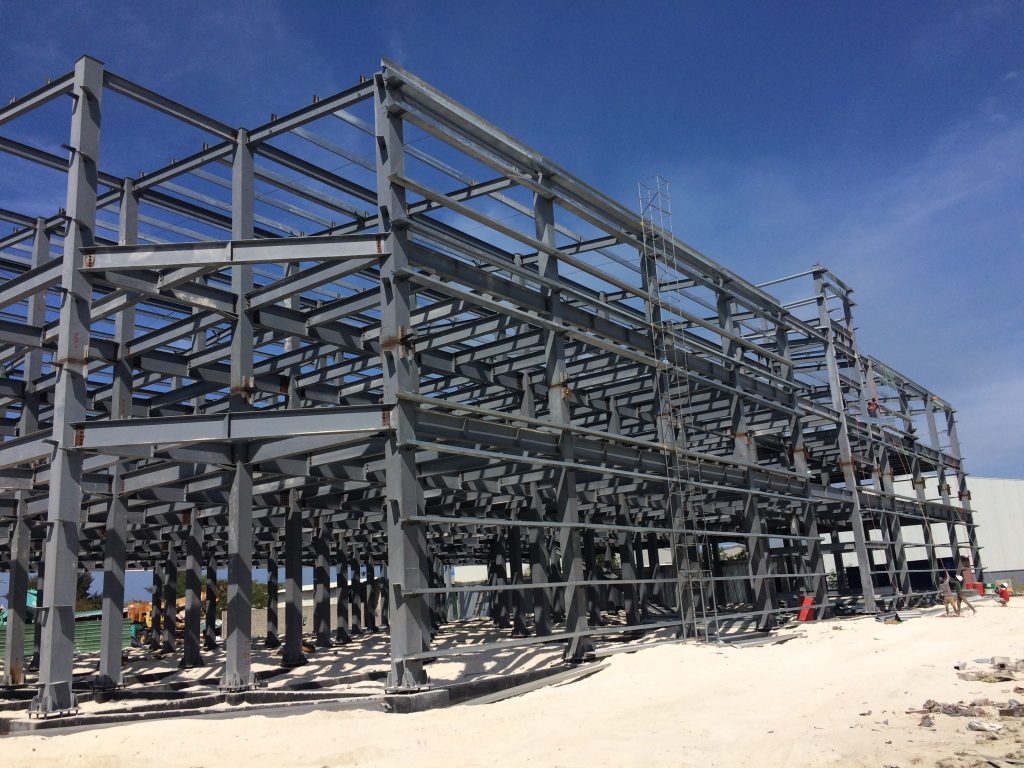
6. The Future of Cost-Effective Construction: Lida Group’s Next Steps
Lida Group’s milestone of 40% lower total ownership costs is just the beginning. The company has ambitious plans to further innovate and expand its cost-effective construction solutions, addressing emerging challenges and opportunities in the global construction industry.
6.1 Investing in Research and Development
Lida Group plans to invest $50 million in R&D over the next five years, focusing on three key areas:
- Advanced Materials: Developing lighter, stronger, and more sustainable materials, such as carbon fiber-reinforced steel and bio-based insulation, to further reduce costs and environmental impact.
- Smart Construction Technology: Integrating artificial intelligence (AI) and Internet of Things (IoT) devices into its modular systems to improve quality control, reduce construction time, and enhance building performance. For example, IoT sensors embedded in components can monitor structural health in real time, reducing maintenance costs by predicting issues before they occur.
- 3D Printing: Exploring 3D printing of modular components to further reduce waste and increase customization. Lida Group has already tested 3D-printed steel connectors, which reduce material usage by 40% compared to traditional connectors.
6.2 Expanding Global Manufacturing and Supply Chain
Lida Group plans to open five new manufacturing facilities in Africa, South America, and the Middle East over the next three years, reducing transportation costs and carbon emissions for regional projects. The company also aims to expand its Active Distribution Model to include local suppliers, further streamlining supply chains and supporting local economies.
6.3 Focus on Affordable Housing
With the global housing shortage worsening—an estimated 1.6 billion people lack adequate housing—Lida Group plans to expand its affordable housing solutions. The company aims to build 1 million affordable housing units over the next decade, using its modular construction methods to deliver low-cost, high-quality homes in developing countries. This initiative not only addresses a critical social need but also expands Lida Group’s market reach and 巩固 its position as a leader in cost-effective construction.
6.4 Advocating for Industry Change
Lida Group plans to work with governments, industry associations, and other stakeholders to promote the adoption of cost-effective, sustainable construction practices. The company will share its research, case studies, and best practices through industry conferences, white papers, and training programs, helping to raise awareness of the benefits of modular prefabrication and supply chain optimization. By advocating for policy changes that support green building and modular construction, Lida Group aims to create a more efficient, sustainable, and affordable construction industry for all.
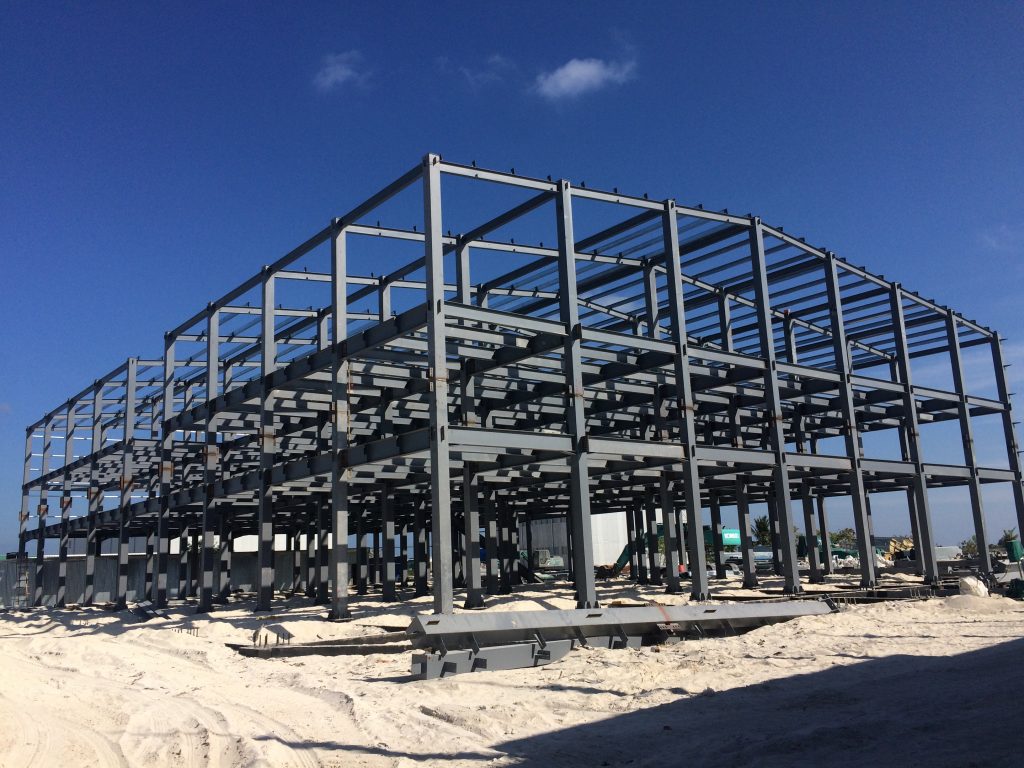
7. Conclusion: Lida Group’s Milestone—A Game-Changer for the Construction Industry
Lida Group’s achievement of delivering construction projects with 40% lower total ownership costs is a significant milestone that redefines what is possible in the global construction industry. By combining modular prefabrication, supply chain optimization, high-strength steel framing, and energy-efficient design, the company has proven that cost efficiency, durability, sustainability, and flexibility can coexist—dispelling the myth that affordable construction requires sacrificing quality or environmental responsibility.
The real-world case studies presented in this article demonstrate the tangible impact of Lida Group’s solutions: residential complexes that provide affordable, energy-efficient housing for low-income families; commercial buildings that achieve top sustainability certifications while reducing long-term costs; and industrial warehouses that are durable, efficient, and completed in record time. These projects not only deliver value for clients but also contribute to a more sustainable and resilient built environment.
Lida Group’s success is rooted in its commitment to innovation, research, and customer-centricity. The company’s Active Distribution Model, inspired by logistics optimization, has revolutionized supply chain efficiency, reducing transportation costs by 60% and minimizing waste. Its use of high-strength cold-formed steel has ensured that its buildings are durable, flexible, and energy-efficient, with a lifespan that far exceeds traditional structures. And its focus on sustainability has allowed it to meet the growing demand for green buildings, while reducing long-term costs for clients.
As the construction industry faces increasing pressure to address cost overruns, environmental concerns, and labor shortages, Lida Group’s milestone offers a roadmap for the future. By embracing modular prefabrication, supply chain optimization, and sustainable design, developers, contractors, and policymakers can create buildings that are affordable, durable, and environmentally friendly—meeting the needs of today while preserving resources for tomorrow.
Looking ahead, Lida Group’s plans to invest in R&D, expand global manufacturing, and focus on affordable housing will further solidify its position as a leader in cost-effective construction. The company’s advocacy for industry change will help to drive the adoption of sustainable, efficient practices across the sector, creating a more resilient and equitable built environment for generations to come.
In a world where construction costs continue to rise and environmental challenges mount, Lida Group’s milestone is more than just a corporate achievement—it is a game-changer that offers hope for a more affordable, sustainable, and efficient construction industry. By following Lida Group’s example, the industry can transform itself, delivering projects that meet the needs of clients, communities, and the planet—proving that cost-effective construction is not just possible, but essential for a better future.
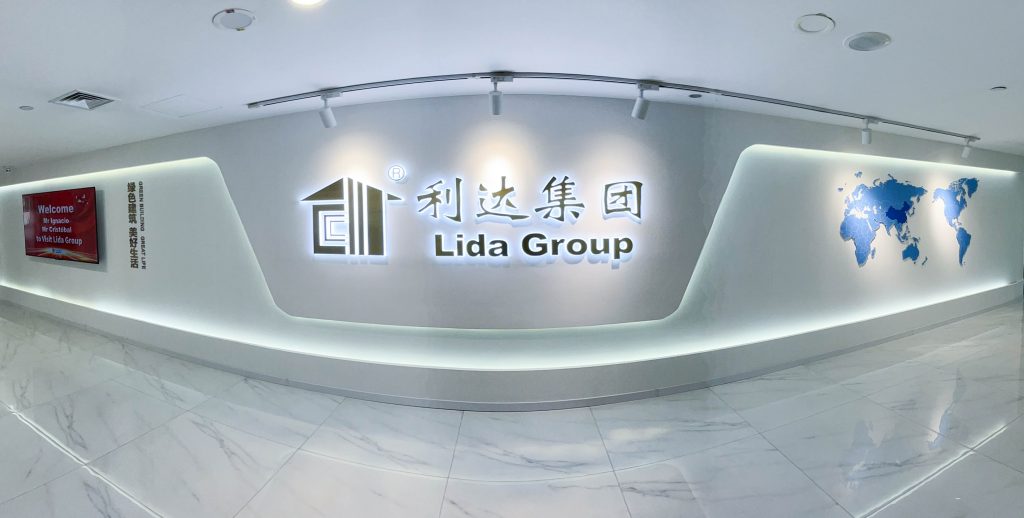
Related news
-
Why Choose a Metal Frame Building for Your Project?
2025-11-12 16:45:20
-
Innovative Steel Structure Building Solutions by Lida Group
2025-11-11 17:59:17
-
Discover the Benefits of Our Metal Frame Building Systems
2025-11-11 13:53:50
contact us
- Tel: +86-532-88966982
- Whatsapp: +86-13793209022
- E-mail: sales@lidajituan.com


